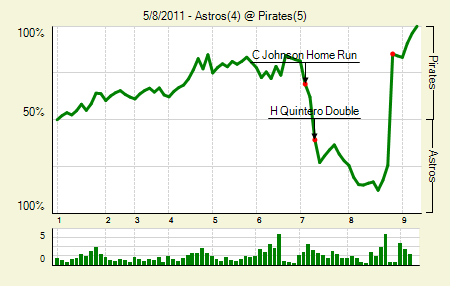As I’m sure many of you are aware, doing early season baseball analysis can be a difficult thing. It’s tempting for saberists to scream “Small sample size!” whenever someone makes a definitive statement about a player, and early season results should always be viewed with a heavy dose of skepticism. After all, it’s a heck of a long schedule: the season started over a month ago, but we’re still less than 20% of the way finished. With most players, we have years and year of data on them – whether in the majors or minors – so why should we trust their results over a mere 100 plate appearances? More data almost always leads to better predictions, so at this point in the season, trusting 2011 results over a player’s past history is a dangerous thing.
At the same time, completely ignoring 2011 results is a horrible idea too. Some players do make dramatic improvements in their game from year to year, and there are always players that age at a different rate than expected — young players that develop fast (or slow) and old players that age quickly (or slowly). Some of a player’s early season results might be the result of a slump or streak, but sometimes there’s also an underlying skill level change that’s tied in with that slump or streak.
So how do we untangle what’s random variation and what’s a skill level change? Scouting information is huge when evaluating players in small samples, but sadly, not many of us are scouts. But stats can still help; you just have to know where to look.
Read the rest of this entry »



